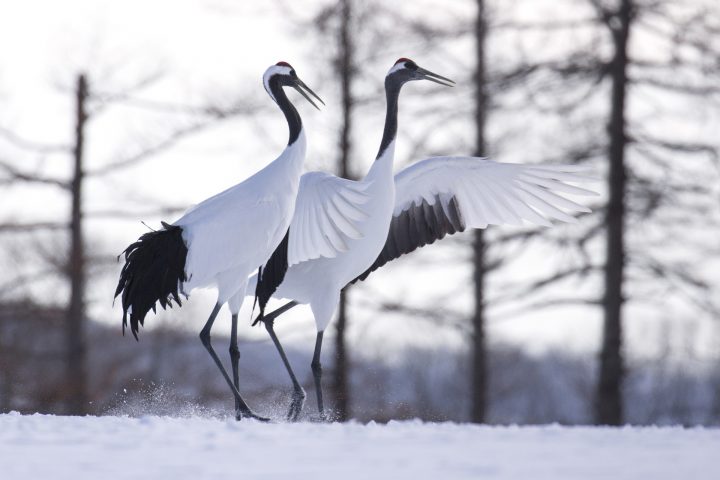Like this post? Help us by sharing it!
When the most widely recognised images of Japan are scenes of neon nightscapes or of bullet trains whizzing past Mt. Fuji, many are surprised to discover most of Japan is wooded, mountainous and sparsely inhabited. But stray far enough and you can find yourself in Hokkaido: Japan’s wild north.
The land is candy for the eyes with serene natural beauty everywhere you look. Hokkaido is so big, it could be its own country, but due to the pretty difficult winter living conditions, most of the land is largely untouched by modernisation. With convenient public transport only in southern parts, such as Hakodate and Sapporo, it can be tricky to get around, but it that leaves a plethora of nature untouched. And with the lowest population density of all of Japan’s prefectures (65 compared to nearly 6,200 people per square kilometre in Tokyo), rich volcanic soils and the bounty of the Oyashio current (which starts in Alaska) Hokkaido boasts an abundance of wildlife.

For the best wildlife spotting, head to one of Hokkaido’s six national parks or the Shiretoko Peninsula (a UNESCO world heritage site known as “the last of Japan’s undiscovered scenic spots”). The landscapes alone demand a visit – from hikes up volcanoes to eerily blue ponds that are the remnants of an eruption, nature is so bountiful it can be hard to know where to start and what to see. These are our favourites to find.

Brown bears
In summer, you have a great chance of seeing brown bears and – perhaps amusingly – the best way to see them is by boat. When hiking in areas with bears you will hear the constant jangling of bells coming from the rucksacks of Japanese hikers. These are important because brown bears are aggressive (especially when cubs are around) but make land sightings much more challenging.
Hokkaido Ezo deer
Possibly the easiest wildlife to spot in Hokkaido – through the car window. This means they’re also a bit of hazard and have become plentiful enough to make venison pretty commonly found.
Ezo Red Fox or ‘kitakitsune’
Equally prominent and plentiful in Hokkaido’s national parks is the Ezo red fox – its bushy red coat and tail give it away. The formal name of these foxes is ‘kitakitsune’, which (boringly) simply means “northern fox” in Japanese. Though a fun fact is the foxes were introduced from cultured silver foxes via the Aleutian Islands in Alaska. “Ezo” (also commonly written as Yezo) is a historic term for everything north of Honshu, Japan’s mainland, so it’s often used for things native to Hokkaido. The ‘kanji’ used for Ezo implies “foreigner” or “barbarian” it shows a distinctness to varieties of things found in Hokkaido that are not found in the rest of Japan.

Ezo
Other “Ezo” animals are the Ezo momonga and the Ezo crying rabbit (or Ezo naki usagi). It’s a type of Pika that is rumoured to be the inspiration for the famous yellow Pokemon – I can’t verify that but have always enjoyed showing people pictures side by side:
Ezo momonga are a type of flying squirrel. There are night-time tours to try to spot them but I’ve never been successful!
Blackiston’s fish owl
For any birder, Blackiston’s fish owl is reason enough to journey to the wilds of Hokkaido. It’s the largest species of owl in the world and, despite the fact that only about 150 owls remain, can be regularly seen on the Shiretoko Peninsula. It’s a designated endangered species and so great efforts are being made to help the species flourish again. Leading the charge is the small “Washi no Yado” (Eagle Inn) guest house where the owls visit nightly.

Orca and other whales
The waters off Hokkaido are both pristine and supplied vast nutrients by the Oyashio current – vast enough to support orcas. They’re regularly spotted in summer, cruises to see them also regularly sight sperm whales and Baird’s beaked whales. Baird’s whales hold the distinguished title of the largest member of the beaked whale family (you knew that was a title, right)? These 30+ foot whales are often found in groups, so sightings are spectacular.

Red-crowned crane
Last but never least is the poster child of Hokkaido wildlife: the spectacular red-crowned crane. You can see them year-round, but they are more prominent in winter. A treat in itself when all of Hokkaido is under beautiful, powdery snow.



